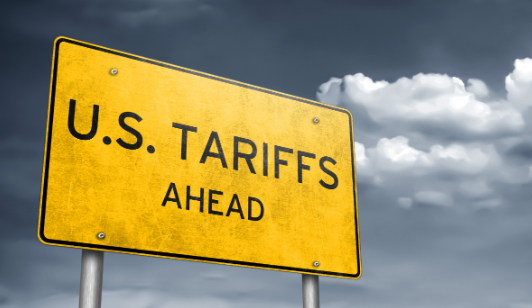When shipping goods to the United States, one of the most critical considerations is understanding US Customs Duties. Whether you’re a business owner expanding into the American market or an individual sending gifts to friends and family, navigating the complex landscape of US customs regulations can significantly impact your shipping costs and delivery timelines. This comprehensive guide will break down everything you need to know about US customs duties, import taxes, and how to efficiently manage these expenses when shipping internationally.
What Are US Customs Duties?
US customs duties are taxes imposed by the federal government on goods entering the United States from foreign countries. These duties serve multiple purposes:
- Generating revenue for the US government
- Protecting domestic industries from foreign competition
- Enforcing trade agreements and policies
- Regulating the flow of certain goods
Unlike domestic sales tax, customs duties are calculated based on various factors including the product’s classification, country of origin, and declared value. Understanding these factors is essential for accurately estimating your shipping costs and avoiding unexpected charges.
The De Minimis Threshold: A Key Advantage in US Customs Duties
One of the most beneficial aspects of US customs regulations is the de minimis threshold, currently set at $800 USD under Section 321. This provision allows shipments valued under this amount to enter the United States duty-free and with minimal customs formalities, with some important exceptions.
Benefits of the De Minimis Provision:
- No customs duties for shipments valued under $800 USD
- Simplified and expedited customs clearance
- Reduced paperwork requirements
- Lower overall shipping costs
However, it’s important to note that this exemption applies primarily to shipments intended for personal use rather than commercial purposes. Even below the $800 threshold, commercial shipments may still require formal entry procedures and might be subject to other fees.
How US Customs Duties Is Calculated
For shipments exceeding the de minimis threshold or those not qualifying for the exemption, understanding duty calculation is crucial:
Key Factors Affecting Duty Rates:
- Harmonized Tariff Schedule (HTS) Classification The HTS assigns specific codes to products, each with its own duty rate. This comprehensive classification system covers virtually every type of product that could be imported.
- Country of Origin Duty rates vary based on the exporting country and its trade relationship with the United States:
- Most Favored Nation (MFN) rates
- Free Trade Agreement preferential rates
- Special trade program rates
- Punitive tariffs for certain countries
- Customs Value This typically includes:
- The actual price paid for the goods
- Packing costs
- Selling commissions
- Royalties or license fees
- Proceeds of subsequent resale that accrue to the seller
Duty Calculation Example:
For a shipment of electronics valued at $1,000 USD with an applicable duty rate of 5%:
- Dutiable value: $1,000
- Duty rate: 5%
- Duty amount: $50
This is a simplified example; actual calculations may involve additional factors.
Beyond Basic Duties: Other US Customs Duties Related Fees
Understanding the full spectrum of potential customs charges is essential for accurate cost estimation:
Merchandise Processing Fee (MPF)
- Applied to most formal customs entries
- For shipments valued over $2,500: 0.3464% of the value (minimum $27.23, maximum $528.33)
- For shipments valued under $2,500: $2.22-$9.83 (depending on filing method)
Harbor Maintenance Fee (HMF)
- 0.125% of the shipment value
- Applies to shipments arriving by sea
- No minimum or maximum limits
Excise Taxes
Certain products are subject to additional federal excise taxes, including:
- Alcoholic beverages
- Tobacco products
- Certain petroleum products
- Firearms and ammunition
Special Considerations for Common Product Categories
Different product types face varying 美國關稅 scenarios:
Clothing and Textiles
- Generally higher duty rates (10-32% common)
- Subject to specific textile import requirements
- Country of origin particularly important
- Material composition affects classification and duty rates
Electronics and Technology Products
- Duty rates typically lower (0-5% common for many items)
- Subject to FCC regulations and requirements
- Section 301 tariffs may apply for products from certain countries
- Technology transfer restrictions for certain advanced components
Food and Agricultural Products
- Subject to FDA and USDA inspection requirements
- Highly variable duty rates depending on specificity
- May require special permits and certificates
- Seasonal duty rates for certain products
Personal Effects and Gifts
- Personal effects can often enter duty-free
- Gift exemption limited to $100 per recipient
- Must be clearly marked as gifts on customs forms
- Frequency and pattern of shipments may affect eligibility
Strategies to Minimize US Customs Duties Impact
Savvy shippers can employ several strategies to reduce customs duty costs:
1. Accurate HS Code Classification
Misclassification can lead to overpayment of duties or penalties for underpayment. Investing time in determining the correct classification can yield significant savings.
2. Utilize Free Trade Agreements
If your goods qualify under free trade agreements like USMCA (formerly NAFTA), they may be eligible for reduced or zero duty rates when accompanied by appropriate documentation.
3. First Sale Rule
In multi-tiered transactions, declaring the value from the first sale rather than subsequent sales can lower the dutiable value and reduce duty amounts.
4. Strategic Package Splitting
Dividing large shipments into smaller parcels valued under the $800 de minimis threshold can eliminate duties entirely for personal shipments, though care must be taken to comply with all regulations.
5. Consider Foreign Trade Zones
Using US Foreign Trade Zones for processing or storage before formal importation can defer or reduce duty payments in certain scenarios.
Navigating US Customs Duties with Fuuffy’s Shipping Platform
Managing customs duties and international shipping doesn’t have to be overwhelming. Fuuffy’s international shipping price comparison platform offers several features to help you navigate US customs requirements:
Pre-Shipment Duty Estimation
Fuuffy provides tools to estimate potential customs duties based on your specific product type, value, and origin country before you ship, eliminating surprises.
Customs Documentation Support
Our platform simplifies the preparation of required customs documentation, helping ensure compliance and smooth clearance:
- Commercial invoices
- Certificates of origin
- Customs declarations
- Special permits when required
Transparent Total Cost Calculation
Fuuffy’s shipping quotes include not just carrier fees but also estimates of duties, taxes, and additional fees, giving you a clearer picture of your total shipping costs.
Customs Broker Network
For complex shipments, Fuuffy can connect you with experienced customs brokers who specialize in US imports, providing expert guidance on classification and compliance.
Duty Optimization Consultation
Our shipping experts can provide recommendations on legitimate duty optimization strategies specific to your product type and shipping patterns.
Common US Customs Duties Pitfalls to Avoid
Even experienced shippers can encounter customs challenges. Here are some common issues to watch for:
Undervaluation
Intentionally declaring a lower value to reduce duties is illegal and can result in penalties, shipment seizure, and future import restrictions.
Incorrect Documentation
Missing or inaccurate information on customs forms can lead to clearance delays, additional inspection fees, and potential shipment return.
Overlooking Special Requirements
Certain products require specific permits, certifications, or testing results to clear US customs. Failing to provide these can result in shipment rejection.
Ignoring Antidumping and Countervailing Duties
These special duties applied to specific products from certain countries can dramatically increase import costs if not accounted for in advance.
Misunderstanding Personal Exemptions
The rules for personal shipments, gifts, and returning US goods have specific limitations that, when misunderstood, can lead to unexpected duties.
Staying Current with US Customs Duties Changes
US customs duties and regulations are subject to frequent changes based on trade policies, international relations, and economic factors:
Regular Policy Updates
Recent years have seen significant trade policy shifts resulting in new tariffs, exclusions, and enforcement priorities. Staying informed about these changes is crucial for accurate shipping planning.
Section 301 Tariffs
Special tariffs on Chinese-origin goods continue to evolve, with potential changes to rates and affected product categories requiring ongoing attention.
COVID-19 Related Measures
The pandemic introduced temporary duty relief for certain medical supplies and equipment, with policies continuously adapting to current needs.
Conclusion: Mastering US Customs Dutiesfor Shipping Success
Understanding US customs duties is essential for anyone shipping internationally to the United States. By familiarizing yourself with the basics of how US Customs Duties works, you can better anticipate costs, prepare appropriate documentation, and leverage available exemptions to optimize your shipping strategy.
Fuuffy’s international shipping platform offers the tools, information, and support you need to navigate the complexities of US customs requirements with confidence. From duty estimation to documentation preparation, our services are designed to simplify the international shipping process and help you avoid costly surprises.
Whether you’re a business shipping products to American customers or an individual sending gifts to friends and family, mastering the fundamentals of US Customs Duties will help ensure your shipments reach their destination smoothly, efficiently, and cost-effectively.
Visit Fuuffy.com today to access our comprehensive shipping tools and start optimizing your international shipping strategy!





























